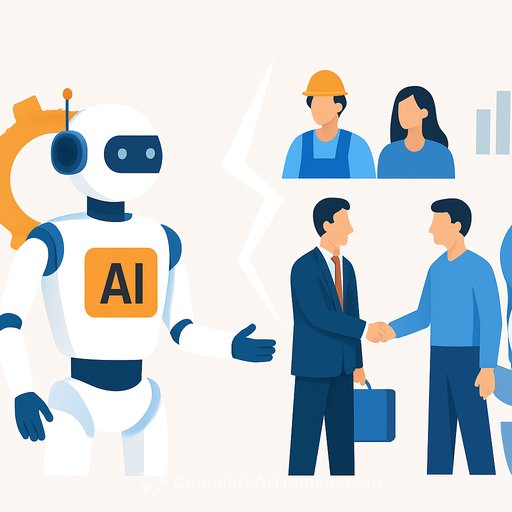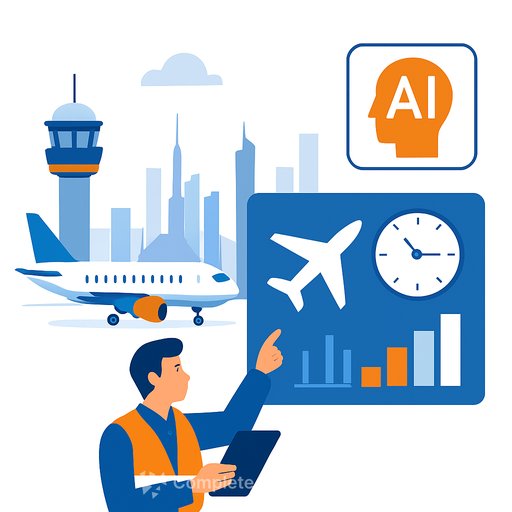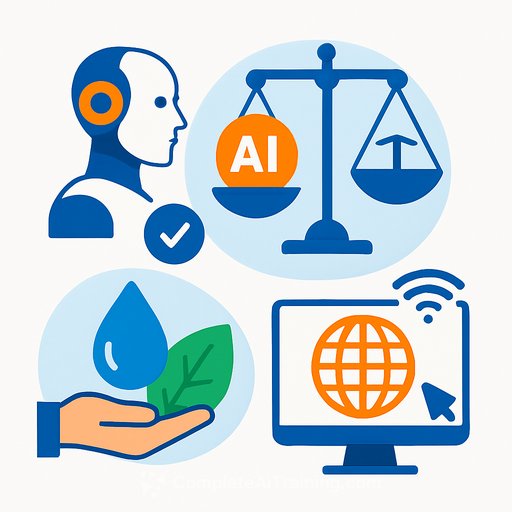The workforce is splitting. Managers have a short window to pick a side
The modern workplace is splitting into two groups: people who can work alongside intelligent systems, and people whose roles fall behind. New tools don't just automate HR and finance anymore. They map skills, expose gaps, and show managers in real time who adapts - and who might be at risk in the next restructuring cycle.
That tension took center stage at Workday Rising 2025 in Barcelona. Workday's leadership framed this as the defining pressure on organisations over the next decade. As CEO Carl Eschenbach put it: "Because of AI, the vibrancy in the workforce is unlike anything we've seen in the last two decades... technology is changing the workforce, and it's happening faster than ever." His question to leaders landed hard: "Is the world outside our company moving faster than we are?"
Speed now beats scale
Eschenbach cast this moment as a pivot point: the speed of intelligent systems is outpacing how fast companies develop people. That urgency is visible in Workday's product roadmap and in how it's buying capability versus building it from scratch.
Earlier this month, Workday completed the acquisition of Sana, an AI-powered skills mapping startup. During the conference, it announced a deal to acquire cloud management tool Pipe Dream. Eschenbach said Workday Ventures, the company's investment arm, is a core way it scouts technology early, integrates with it, and moves fast when the fit is clear. "We were investors in Sana... We bring them in, and off we go, integrating it and then taking it to market."
The point is time. Ventures lets Workday see how products behave inside customer environments and move before the market shifts. "Pipe Dream has 3,000 integrations the day we buy them. For us to do that would have taken us one, two, maybe three years." Years lost in development widen skill gaps inside the workforce.
If you're a manager, the takeaway is simple: speed compounds. Buy time where you can. Build where it creates advantage. Measure whether your teams are keeping up.
What this means for regions like Africa, the Middle East, and Asia
Rob Enslin, Workday's South African-born president and COO, said the impact extends to entire economies. He pointed to agentic AI that can augment workers, raise skill levels quickly, and support countries with tight management capacity.
Examples he cited: Singapore pushing to augment workers and raise skills. The UAE focusing on managerial capability with AI as a support layer. For Africa, the potential is significant if access and delivery reach communities differently - high school graduates could gain workforce-ready skills in months, not years.
South Africa: conviction over conditions
Michael Douroux, who leads sales for Workday across EMEA and has deep experience in South Africa, noted the local reality: recessionary headwinds before Covid, then a second hit during the pandemic. In that environment, transformation depends more on leadership conviction than market cycles.
He was blunt about what companies want: "A lot of South African businesses have been burned by never-ending deployments of enterprise back office software." They're looking for pre-built integrations, reduced complexity, affordable subscriptions, and fast time to value.
Douroux also sees South Africa as an anchor for Workday's African strategy - a hub for talent, near-shoring services, and deployment capacity. The broader point for leaders: build capability where it's strong, then scale it regionally.
What to do in the next 90 days
- Build a live skills graph: Inventory current skills, certifications, and projects for every team. Update monthly. Tie it to roles, not titles.
- Define "critical capabilities": Pick 5-7 capabilities per function that map to strategic goals. Assign owners and build learning plans.
- Set an AI-use policy: What tools are allowed, for which tasks, with what data? Keep it simple and enforceable. Review quarterly.
- Run two AI pilots: One for a knowledge workflow (e.g., RFPs, policies), one for an operations workflow (e.g., close, scheduling). Measure time saved and error rates.
- Buy time with integrations: Prioritise platforms with mature, pre-built connectors. Avoid custom work unless it creates clear advantage.
- Fund transitions: Create a reskilling path for at-risk roles. Guarantee interviews for internal movers who complete defined skill tracks.
Metrics that reveal adaptability
- Time-to-skill: Days from course start to first qualified project use.
- Internal mobility rate: Moves into new roles or projects per quarter.
- Automation coverage: Percentage of recurring tasks with approved AI/automation support.
- Cycle times: Close, hiring, onboarding, incident resolution - trend these monthly.
- Integration leverage: Share of workflows using pre-built integrations vs. custom.
Procurement checklist (use this before you sign)
- Integrations: Are the top 10 you need already live and supported? No promises - proof.
- Data model: Can it store skills, proficiency, certifications, and project history natively?
- Security: Clear stance on data retention, model training, and audit logs for AI features.
- Time to value: 90 days or less to first measurable outcome. Define it in the contract.
- Exit cost: Cost and effort to migrate data out. Get it in writing.
The management stance that works now
Assume your competitors are training AI on their operations and talent data. Assume your best people will expect the same. Your job is to make adaptability visible, invest where speed matters, and remove friction that slows learning.
Or, as Eschenbach asked: is the world outside moving faster than you are? If yes, fix the system so your people can keep up.
Further reading and resources
- Workday Ventures: how Workday scouts and scales emerging tech
- World Economic Forum: Future of Jobs report (skills and AI)
- Complete AI Training: courses by job function
- AI Automation Certification: build team capability fast
Your membership also unlocks:






